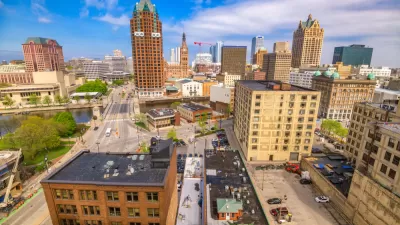A new mayoral administration in Anchorage has its sights set on a revitalized urban core, but one local researcher has suggestions for how to expand that vision.

"A world-class urban center in Alaska’s largest city has long been the Holy Grail for Anchorage leaders," writes Jeanette Lee, senior researcher for Sightline, who worlds from Anchorage.
The city's new mayor, Dave Bronson, has prioritized investments in the downtown neighborhood of Anchorage in pursuit of that "holy grail," according to Lee. There's a lot going on in downtown Anchorage—during the summer. "What no one has managed to figure out, though, is how to keep the downtown economy humming like it’s always the peak of summer, when office workers, other Alaskans, and tourists are dining out, buying things, and paying for lodging in the downtown core," writes Lee.
Since his transition into office, Mayor Bronson has focused on downtown as a key driver of economic revitalization: "His team wants a vibrant year-round business environment and intends to focus on supporting tourism, filling office space, and boosting retail sales." Lee suggests, however, that Bronson needs to be more ambitious in attracting new residents to downtown—a trend toward urban population growth that has skipped over Anchorage while changing the face of many downtowns around the country.
High construction costs are the primary hurdle facing the task of adding more residential population—not demand—according to Lee.
The city has put in place some policies to encourage housing downtown, including tax abatement and letting developers choose how much parking to build, but it can do more. A few suggestions include partnering with developers to invest in projects; incentivizing housing builds on downtown’s numerous surface parking lots and other underdeveloped properties; mitigating offsite construction costs; zoning reform; and attracting foundational neighborhood businesses, like a grocery store.
Lee provides a lot more detail on the challenges facing a downtown revitalization in Anchorage. Drilling down on each of the earlier and suggested actions listed in the preceding paragraph.
FULL STORY: Let There Be Housing in Anchorage

Planetizen Federal Action Tracker
A weekly monitor of how Trump’s orders and actions are impacting planners and planning in America.

Map: Where Senate Republicans Want to Sell Your Public Lands
For public land advocates, the Senate Republicans’ proposal to sell millions of acres of public land in the West is “the biggest fight of their careers.”

Restaurant Patios Were a Pandemic Win — Why Were They so Hard to Keep?
Social distancing requirements and changes in travel patterns prompted cities to pilot new uses for street and sidewalk space. Then it got complicated.

Platform Pilsner: Vancouver Transit Agency Releases... a Beer?
TransLink will receive a portion of every sale of the four-pack.

Toronto Weighs Cheaper Transit, Parking Hikes for Major Events
Special event rates would take effect during large festivals, sports games and concerts to ‘discourage driving, manage congestion and free up space for transit.”

Berlin to Consider Car-Free Zone Larger Than Manhattan
The area bound by the 22-mile Ringbahn would still allow 12 uses of a private automobile per year per person, and several other exemptions.
Urban Design for Planners 1: Software Tools
This six-course series explores essential urban design concepts using open source software and equips planners with the tools they need to participate fully in the urban design process.
Planning for Universal Design
Learn the tools for implementing Universal Design in planning regulations.
Heyer Gruel & Associates PA
JM Goldson LLC
Custer County Colorado
City of Camden Redevelopment Agency
City of Astoria
Transportation Research & Education Center (TREC) at Portland State University
Camden Redevelopment Agency
City of Claremont
Municipality of Princeton (NJ)





























